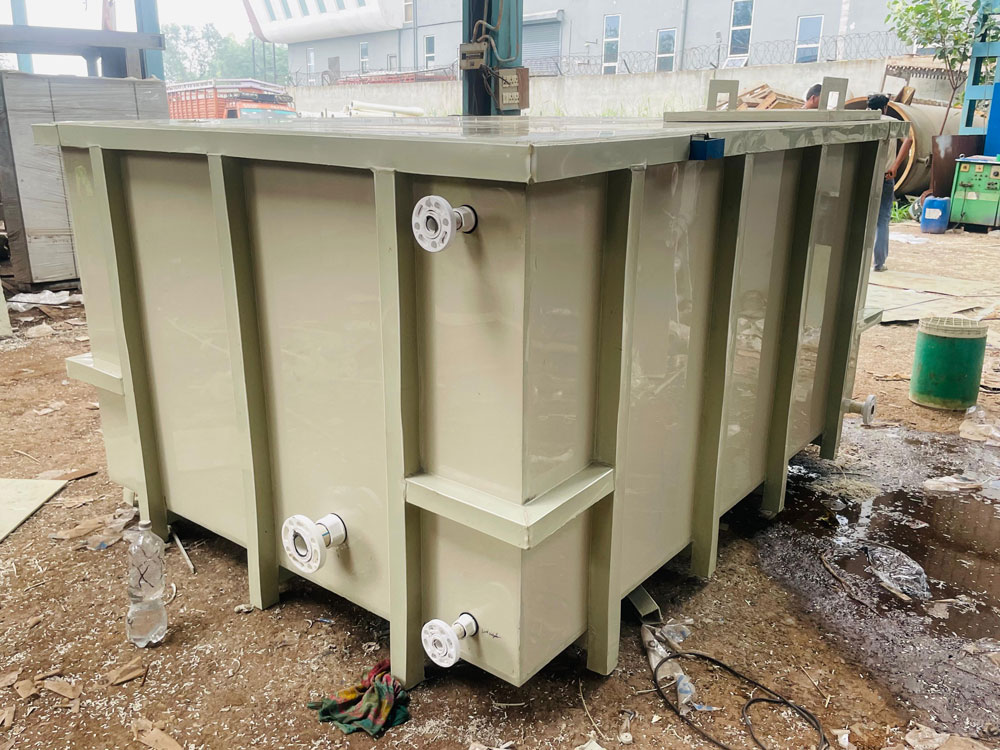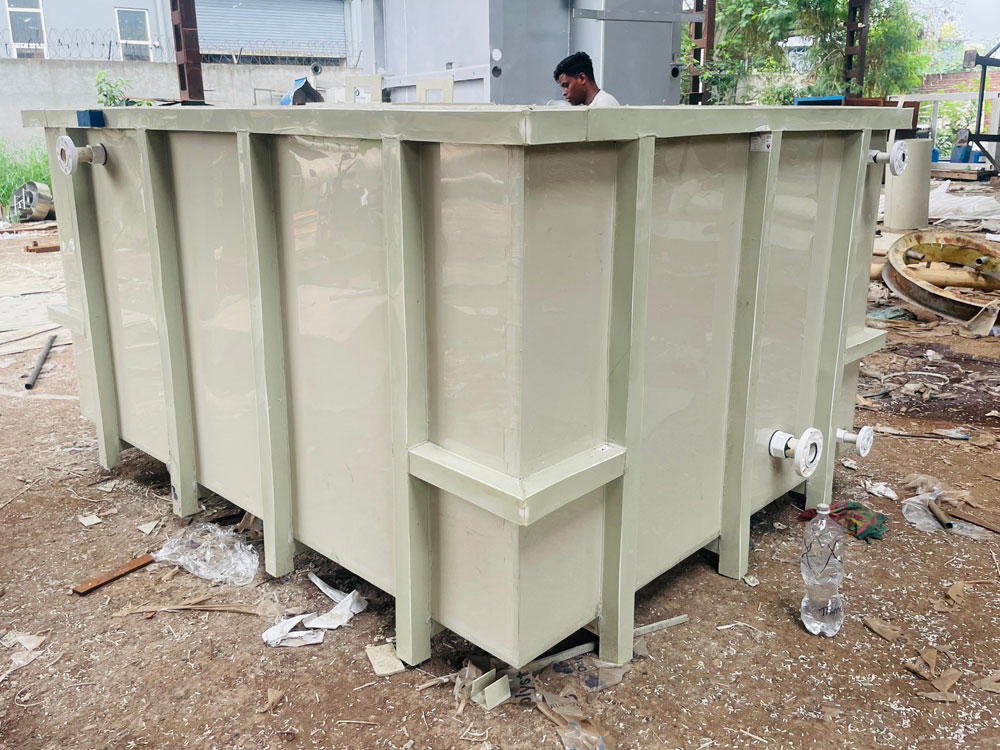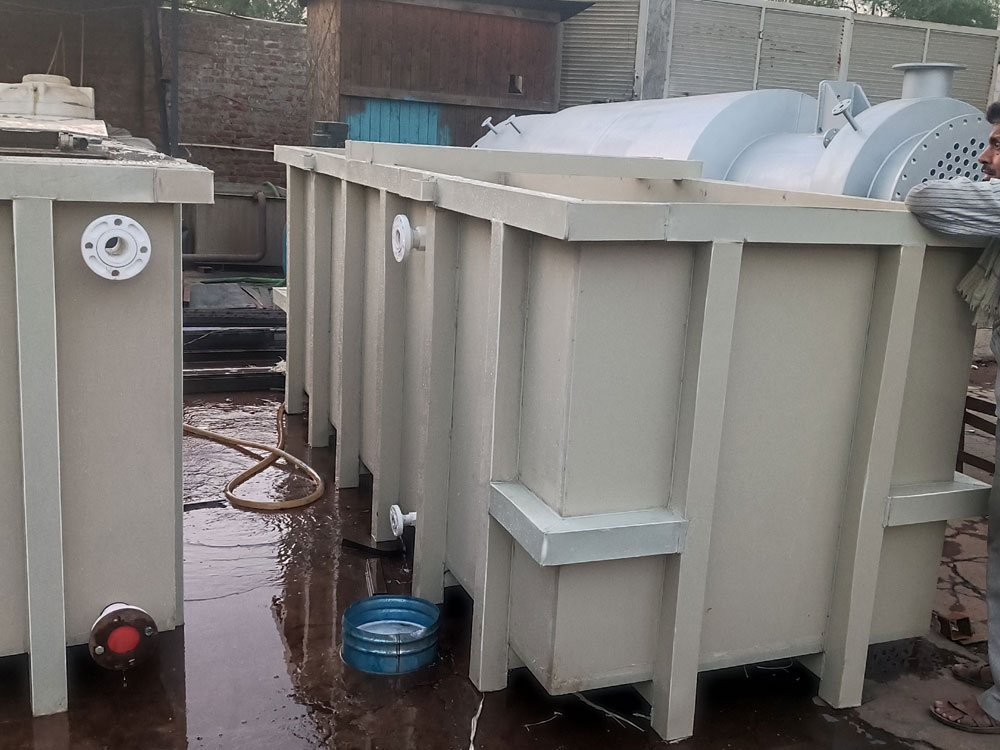
PP Tanks




PP TANKS
Excel Engineering specializes in the fabrication and onsite chemical storage tank installation , We fabricate premium grade polypropylene tanks using PPH Sheets of various thickness and customized sizes as per client requirements.
What Are Polypropylene (PP) Tanks?
Polypropylene tanks are storage and process tanks made from polypropylene, a thermoplastic polymer known for its excellent chemical resistance, low weight, and thermal stability. These tanks are typically fabricated by welding polypropylene sheets and are used to store or process corrosive chemicals, water, effluents, and more.
⚙️ 2. Key Properties of PP Tanks
Property | Description |
Chemical Resistance | Excellent resistance to most acids, alkalis, and corrosive chemicals |
Temperature Resistance | Typically up to 90°C – 100°C (short-term up to 120°C) |
Mechanical Strength | Good – not as strong as metals but suitable for moderate mechanical loads |
Non-Toxic & Food Safe | Food-grade variants available – safe for food and pharmaceutical use |
Lightweight | Easier to transport, install, and maintain compared to metal tanks |
UV Resistance | Moderate – can be enhanced with additives or external coatings |
Weldability | Easily weldable for custom fabrication and leak-proof joints |
Non-Conductive | Electrically insulating – safe for chemical and electronic environments |
Low Cost | Economical compared to SS and sometimes even MS tanks |
🏭 3. Industrial Applications of PP Tanks
PP tanks are widely used across multiple industries, especially where corrosion resistance and chemical compatibility are key:
Industry | Application |
Chemical Processing | Storage and mixing of acids, alkalis, solvents |
Electroplating & Metal Finishing | Acid/alkali cleaning tanks, plating tanks, rinsing tanks |
Water & Wastewater Treatment | Storage of treated/untreated water, effluents, neutralization tanks |
Pharmaceutical | Clean process tanks, storage of raw materials |
Food & Beverage | Food-grade PP tanks for brine, additives, non-reactive ingredients |
Textile | Dyeing, bleaching, and chemical dosing tanks |
Fertilizer & Pesticide Plants | Storage of corrosive liquid fertilizers and chemical components |
Electronics | Etching, cleaning, and rinsing tanks |
🧱 4. Types of PP Tanks (Based on Material Variants)
Type | Properties & Applications |
Homopolymer PP (PP-H) | Higher rigidity, better chemical resistance, slightly lower impact strength |
Copolymer PP (PP-C or PPH-C) | Improved impact resistance, better performance at low temperatures |
Glass-Filled PP | Reinforced for added stiffness and structural strength – used where higher mechanical loads exist |
UV-Stabilized PP | Contains UV inhibitors – suitable for outdoor installation |
Antistatic PP | Special variant to reduce static charge – used in explosive or sensitive environments |
⚖️ 5. Comparison: PP Tanks vs MS Tanks vs SS Tanks
Parameter | PP Tanks | MS (Mild Steel) Tanks | SS (Stainless Steel) Tanks |
Cost | ✅ Low | ✅ Moderate (cheaper than SS) | ❌ High (especially SS316/SS304) |
Chemical Resistance | ✅ Excellent for acids, alkalis | ❌ Poor – requires lining or coating | ✅ Excellent (depends on grade) |
Weight | ✅ Very light | ❌ Heavy | ❌ Heavy |
Maintenance | ✅ Minimal (non-corrosive) | ❌ High (needs repainting/coating) | ✅ Low (if maintained well) |
Lifespan | ✅ 15–25 years (depends on use) | ❌ 5–10 years (corrosive applications) | ✅ 20–30+ years |
Temperature Resistance | ❌ Limited to ~100°C | ✅ High (up to 400°C) | ✅ High (up to 600°C depending on grade) |
Food/Pharma Grade | ✅ Food-safe variants available | ❌ No (unless lined) | ✅ Widely used in hygienic applications |
Installation | ✅ Easy & quick | ❌ Heavy lifting, complex foundation | ❌ Complex handling |
Custom Fabrication | ✅ Easily customized via welding | ❌ Time-consuming | ❌ More expensive to customize |
UV Resistance | ❌ Needs UV stabilization | ✅ Naturally resistant with paint | ✅ High |
🧪 6. Chemical Compatibility of PP Tanks
PP tanks are ideal for storing chemicals such as:
- Hydrochloric Acid
- Sulfuric Acid (Dilute)
- Sodium Hypochlorite (Bleach)
- Caustic Soda (NaOH)
- Nitric Acid (Dilute)
- Ammonia Solutions
- Detergents and Cleaning Agents
- Fertilizer Solutions
- Brine and Saline Water
⚠️ Not recommended for:
- Strong oxidizing acids (like fuming nitric acid)
- High-temperature solvents
- Aromatic hydrocarbons (e.g., toluene, benzene)
🔧 7. Common Shapes and Configurations of PP Tanks
Type | Application |
Vertical Cylindrical Tanks | Storage of liquids in limited floor space |
Horizontal Tanks | For large-volume storage or transport |
Rectangular / Square Tanks | Common in plating, dipping, and chemical baths |
Conical Bottom Tanks | Easy drainage, used in sedimentation or mixing |
Open-Top Tanks | For process tanks, rinsing, plating, chemical treatment |
Double-Wall Tanks | Extra safety for hazardous chemical storage |
✅ Conclusion – When Are PP Tanks Most Suitable?
Choose Polypropylene tanks when:
- You are storing corrosive chemicals under moderate temperature conditions
- Budget is a constraint, and SS tanks are too expensive
- Customization or onsite fabrication is required
- The application needs non-conductive or food-safe tanks
- Maintenance and corrosion are major concerns
free to write our team anytime

Contact Us


